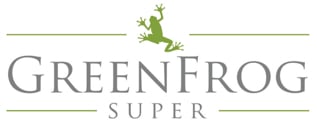One way to purchase a property with a related party and an SMSF as co-owners is to establish a unit trust, ensure that it complies with Regulation 13.22C of the Superannuation Industry (Supervision) Regulations 1994 at all times and have the unit trust purchase the property.
Here’s a practical example of how this works:
John and Michelle have an SMSF that has $300,000 that they would like to invest in property. They do not wish to borrow within the fund. In their personal names, they also have $200,000 that they would like to invest in property.
A unit trust is established and their SMSF purchases $300,000 of units and they purchase $200,000 of units which leaves the unit trust with $500,000 in cash and the super fund owning 60% and John & Michelle owning 40%.
The unit trust then uses this money to purchase a property, pay for any purchase costs such as transfer duty and legal fees and maintains some extra funds in a bank account for some liquidity.
The unit trust enters into the leases with tenants, receives the rent and pays the expenses such as rates, insurance and repairs. The net income is then distributed to the unit holders based on their ownership. In the scenario above the super fund would receive 60% of the net rent and John & Michelle would receive 40%. Each owner would include their share of the income in their tax returns.
PROS:
- The Super Fund can later acquire units from the related party which allows it to increase its ownership of the property. This is not possible when a super fund and related party co-own a property as tenants in common unless it is business real property;
- The related party and/or the super fund can subscribe to new units in disproportionate amounts if more capital is needed for improvements or renovations;
- The related party can borrow to acquire their units in the unit trust (generally by offering another asset as security) and then claim the interest on the loan as a personal tax deduction because the trust is income-producing. This effectively allows them to gear their share of the ownership much like they would if they owned it as a tenant in common with the SMSF.
CONS:
- The unit trust must comply with the provisions of 13.22c at all times. Any breach of any of the provisions will mean that the trust is subject to the in-house asset rules which limit the value of this investment in the fund to 5% of its assets. This almost always means that the SMSF must dispose of its investment in the trust even if the breach is rectified;
- There are additional costs to establish this structure due to the set-up of a unit trust (and corporate trustee if desired);
- There are additional costs to run this structure because the unit trust is a separate entity and must lodge a tax return;
SUMMARY OF 13.22c RULES:
- The trustee of the unit trust cannot borrow;
- The trustee of the unit trust cannot be a party to a lease with a related party (unless the asset is business real property);
- The assets of the unit trust cannot include:
- An interest in another entity (for example, the unit trust cannot purchase shares in a company with its surplus funds)
- A loan to another entity, unless the loan is a deposit with an authorised deposit-taking institution within the meaning of the Banking Act 1959 (generally this means that it can have an Australian bank account only);
- An asset that has a charge over it;
- An asset that was acquired from a related party of the superannuation fund after 11 August 1999, unless the asset was business real property acquired at market value;
- An asset that had been at any time (unless it was money or business real property acquired at market value) an asset of a related party of the superannuation fund since the later of:
- The end of 11 August 1999; and
- The day 3 years before the day on which the SMSF first acquired its unit/s.
What this means in practice is that the unit trust can own the property with no encumbrances and have a bank account; and nothing else.
The information above is general in nature and for information purposes only. You should consider your own circumstances and seek professional advice before implementing any strategies mentioned in this site.



